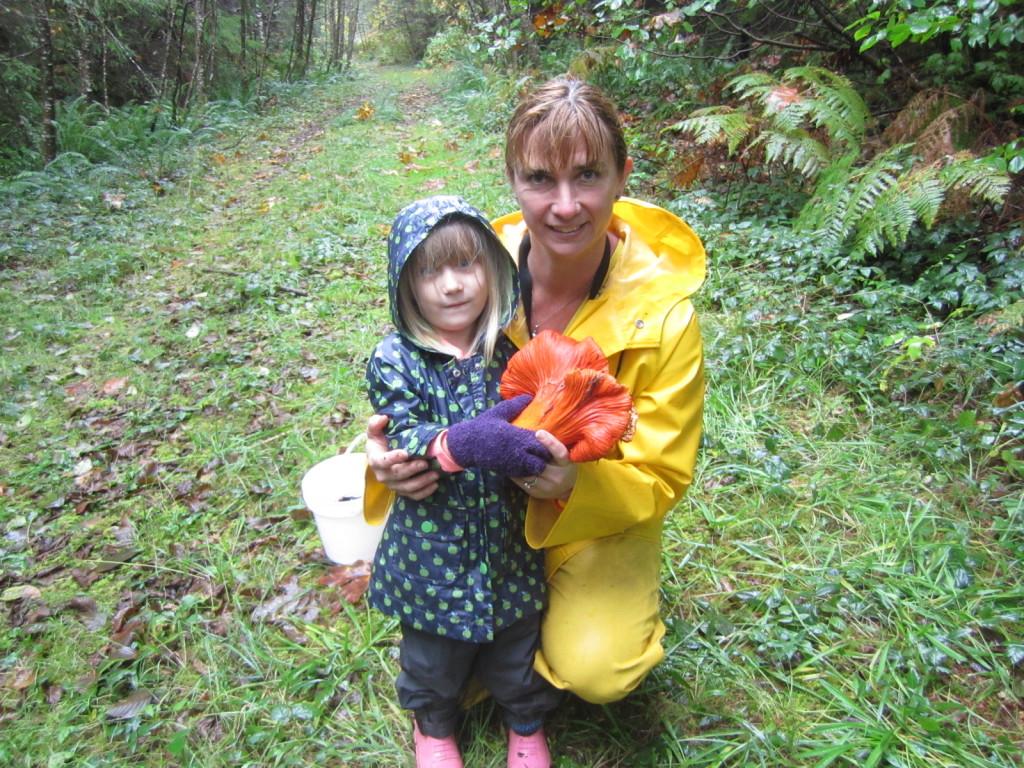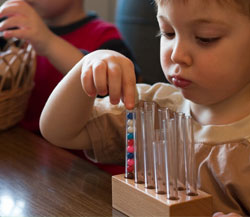 One crisp autumn day Lucy and her parents decided to go mushrooming on Mount Arrowsmith. The weather conditions were perfect: it was damp and cool after a week of rain and fog. The family hiked along the hard-packed trail for a stretch, then veered off the path and headed deeper into the forested canopy. Lucy loved this family ritual of hunting and gathering wild mushrooms each year. She used a short sturdy branch as a walking stick and peered under fallen tree logs and layers of moss for the hidden treasures. Lucy’s mom always knew the best places to look for edible species and how to identify them. Lucy’s dad carried the basket with their harvest. It didn’t take long before they found two varieties: a handful of golden chanterelles poking out of the wet moss beside a large rock outcropping, and large red lobster mushrooms under the base of a Hemlock tree.
One crisp autumn day Lucy and her parents decided to go mushrooming on Mount Arrowsmith. The weather conditions were perfect: it was damp and cool after a week of rain and fog. The family hiked along the hard-packed trail for a stretch, then veered off the path and headed deeper into the forested canopy. Lucy loved this family ritual of hunting and gathering wild mushrooms each year. She used a short sturdy branch as a walking stick and peered under fallen tree logs and layers of moss for the hidden treasures. Lucy’s mom always knew the best places to look for edible species and how to identify them. Lucy’s dad carried the basket with their harvest. It didn’t take long before they found two varieties: a handful of golden chanterelles poking out of the wet moss beside a large rock outcropping, and large red lobster mushrooms under the base of a Hemlock tree.
When Lucy came to school on the following Monday morning, she and her mom related this story to me. They brought along a picture of the mushrooms that they had printed off a website and Lucy asked to show it to her classmates. I suggested she set up a floor mat and invite the children who were interested to join her. Over the course of the morning, and in between other schoolwork, Lucy enjoyed showing the picture and sharing her adventures as a mushroom gatherer.
This anecdote is a good example of the Montessori approach to show and tell. It serves to illustrate the numerous benefits that are met for the social, emotional and cognitive development of young children:
- The topic of interest was initiated by the child and provided a meaningful opportunity for sharing and exchange of information.
- The opportunity to be spontaneous and share while the event was still fresh and exciting met the needs of the child in the moment of interest.
- The child is able to practice leadership and speaking skills by taking part in the presentation.
- The small group at a mat allows for the children who are interested to join in, and is more manageable.
- The topic could and will likely lead to further discussion, research and learning in the classroom.
Suggested opportunities for sharing might include:
- shells collected at a local beach or from a vacation
- a favourite book
- a new discovery from nature
- a cultural song, story, celebration
Please note: All choices are best made when found in nature or that depict real images. Toys are not suitable for sharing in class. Please ensure books do not depict movies, TV shows or super heroes.






